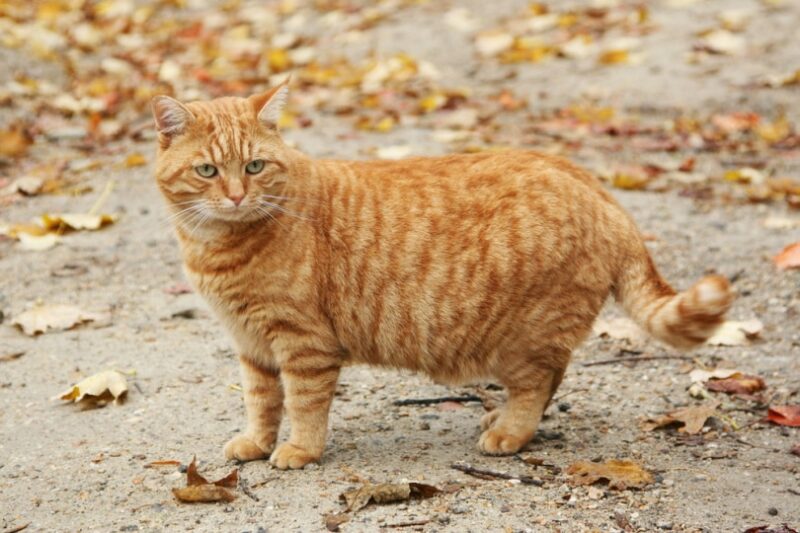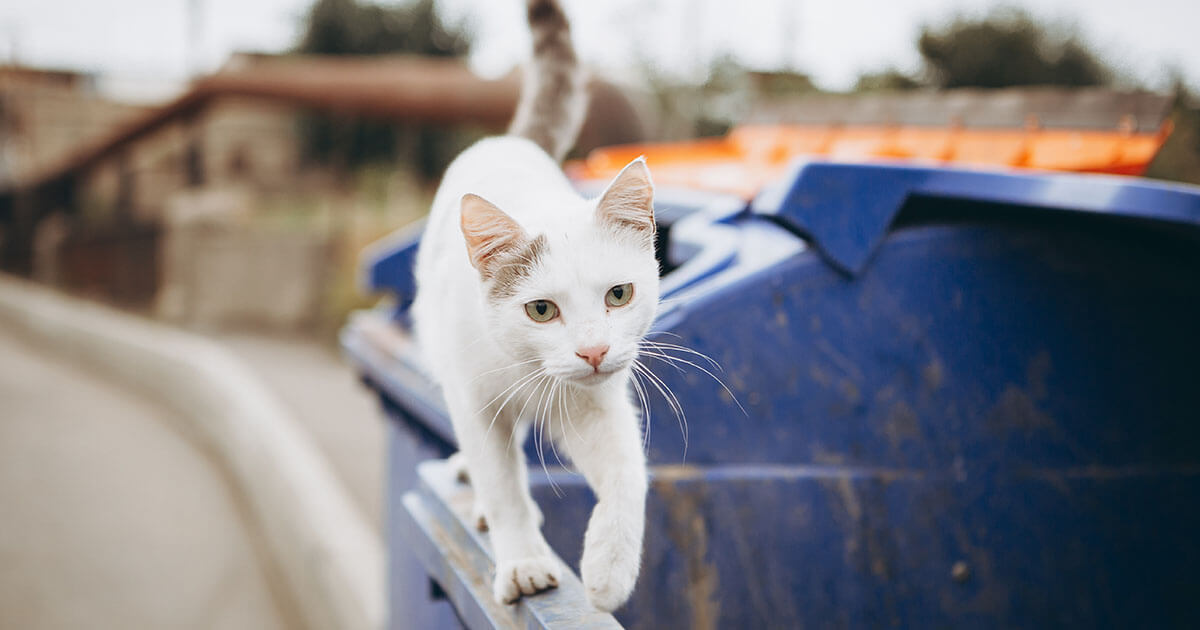A stray cat may be hungry if it is meowing persistently or appears malnourished and scrawny. Aggressive food-seeking behaviors like scavenging in bins also indicate hunger.
Discovering a stray cat can tug at the heartstrings of any animal lover. It’s crucial to assess the needs of the feline, especially its hunger, to provide appropriate help. A malnourished appearance, such as visible ribs or a sunken abdomen, is a clear sign of a cat in need.
These animals often vocalize their distress through constant meowing or purring around humans, signaling a plea for food. They may also exhibit anxious behaviors, such as following people or showing a strong interest in any food-related activities. Paying attention to these signs is the first step in offering aid to a stray cat. Remember, a balanced approach involving observation and gentle interaction is key to determining the needs of a stray cat without overwhelming it.

Credit: www.catster.com
Recognizing Hunger In Stray Cats
Understanding when a stray cat is hungry can be a challenge. Knowledge of feline body language and vocalization is crucial. This guide aims to help you recognize the signs of hunger in stray cats.
Body Language Cues
Stray cats communicate a lot through their body language. Look for the following signs to determine if a cat is hungry:
- Prowling near possible food sources, like trash bins or outdoor seating areas.
- Approaching humans with a mix of caution and curiosity, possibly signaling a search for food.
- Exhibiting restless behavior or looking for attention, which can point to hunger.
Vocal Signs
Cats also use their voice to express needs. Pay attention to these vocal cues:
- Persistent meowing or crying near human activity or in areas where food is often available.
- Chirping or chattering, which can indicate eagerness for a meal.
- A noticeable change in vocalization patterns, like increased volume or frequency could be a sign of hunger.
Physical Indicators Of Hunger
Identifying hunger in stray cats is crucial to provide them with the care they need. Cats often struggle to find food, which leads to malnutrition. Understanding physical indicators of hunger can help you intervene at the right time. Here’s what to look out for.
Coat And Eye Condition
A stray cat’s coat offers significant clues about its nutritional status. A well-fed cat typically has a smooth, shiny coat. In contrast, a hungry cat might show signs like a rough, dull, or matted coat. This indicates the cat isn’t receiving essential nutrients.
The condition of a cat’s eyes also tells a story. Bright, clear eyes suggest good health. In contrast, eyes that are dull or sunken can signal that a cat desperately needs sustenance.
Visible Signs Of Malnutrition
Visible ribs, hips, and spine are alarming indications that a stray cat faces severe hunger. A healthy cat should have a slight layer of fat over these areas.
- Weight loss is another obvious sign to watch for.
- Stunted growth in younger cats can also result from insufficient food intake.
Lethargy or less interest in interaction can be additional signs the cat isn’t feeding well. Keep a lookout for these physical indicators to determine if a stray cat you encounter might be suffering from hunger.
Behavioral Clues Of A Hungry Stray
Understanding the behavioral clues of a hungry stray cat can be the key to providing timely assistance. These animals communicate their needs in various ways. Observing their behavior often reveals their search for food.
Increased Sociability
A stray cat’s disposition might change when it’s searching for food. Normally solitary creatures, these cats become friendlier when they need sustenance. Look out for a stray that:
- Approaches humans more readily than usual.
- Seems less cautious around people.
- Begins following passersby, possibly in hopes of being fed.
Food-seeking Actions
Strays looking for food may display certain behaviors that signal their hunger:
- Mewing or vocalizing more frequently, especially where people eat.
- Scavenging in bins, an obvious sign of searching for leftovers.
- Staying close to areas where people are known to discard food.
Watch for these behaviors to identify a stray cat’s needs and provide appropriate help.
Assessing A Stray Cat’s Food Needs
Assessing a stray cat’s food needs is crucial if you come across one. With care and caution, determining if a stray cat is hungry allows us to help without causing stress. It’s important to note the cat’s behavior and physical condition.
Safe Approach Techniques
When it comes to stray cats, safety is paramount. Move slowly to avoid scary movements. Make sure to speak softly. This helps create a calm environment. Gradually get closer to the cat. Try offering food and water. Leave them where the cat can reach them without feeling trapped.
Health Condition Evaluation
Evaluating the health of a stray cat can give clues about its hunger. Look for signs like poor fur quality. This might imply malnutrition. Check if the cat is thin or its ribs are visible. These are red flags that the cat might be starving.
- Observe the cat’s energy levels. A lethargic demeanor could mean the cat is weakened from lack of food.
- Check the cat’s eyes and nose for discharge. This could indicate illness, which may affect appetite.
- Take note of any injuries that could prevent the cat from hunting or eating properly.
Remember, feeding a stray cat should be done carefully. It’s best to provide small amounts of food to begin with. This prevents stomach upset.
Feeding A Hungry Stray Cat
Discovering a stray cat’s hunger can tug at your heartstrings. Knowing how to feed a hungry stray cat properly is crucial for its health and well-being. Providing food for a stray involves more than just offering leftovers. It requires thoughtful consideration to ensure the cat’s dietary needs are met adequately.
Choosing The Right Food
Selecting appropriate food for a stray cat is essential. Start with nutrient-rich options.
- Commercial cat food: High in protein, right balance of nutrients.
- Canned wet food: Easier for cats to eat and digest.
- Specific life-stage food: Kittens and senior cats have different nutritional requirements.
Do not give a stray cat anything toxic to felines, like onions, chocolate, or alcohol. Always check if the food is safe for cats.
Consistent Feeding Practices
Once you start feeding a stray, consistency is key. Establishing a routine helps the cat understand when to expect food.
| Feeding Time | Food Type | Quantity |
|---|---|---|
| Early Morning | Dry food | 1 cup |
| Evening | Wet food | 1 can |
Be mindful of the amount you provide. Overfeeding can be harmful. Aim for controlled portions to maintain a healthy weight. To avoid attracting pests, remove uneaten food after an hour or so.

Credit: www.wikihow.com

Credit: rehome.adoptapet.com
Frequently Asked Questions For How Do You Know If A Stray Cat Is Hungry
How Do You Tell If A Cat Is Actually Hungry?
To tell if a cat is hungry, observe its behavior. A hungry cat typically meows persistently, follows you, and heads toward where food is kept. Check the feeding schedule to avoid overfeeding.
What Do Stray Cats Do When They Are Hungry?
Stray cats often scavenge for food in trash bins, and may hunt small animals or birds when hungry. They might also approach humans or frequent areas where people feed feral cats.
How Often Should You Feed A Stray Cat?
Feed a stray cat once or twice a day, providing a balanced meal each time. Avoid overfeeding to prevent dependency and health issues.
How Long Can Stray Cats Go Without Food?
Stray cats can survive without food for about 2 weeks, but this can vary based on their health and environmental conditions. It’s crucial they have access to clean water, as they can only last 3 days without hydration.
Conclusion
Recognizing the signs of hunger in stray cats can be life-saving. Remember, a ravenous feline may show aggression, meowing, or increased friendliness. Regularly leaving out water and healthy cat food can help. By staying observant and compassionate, you’ll make a positive impact on these feral friends’ lives.
Let’s ensure no cat goes unnoticed or unfed in our community.

